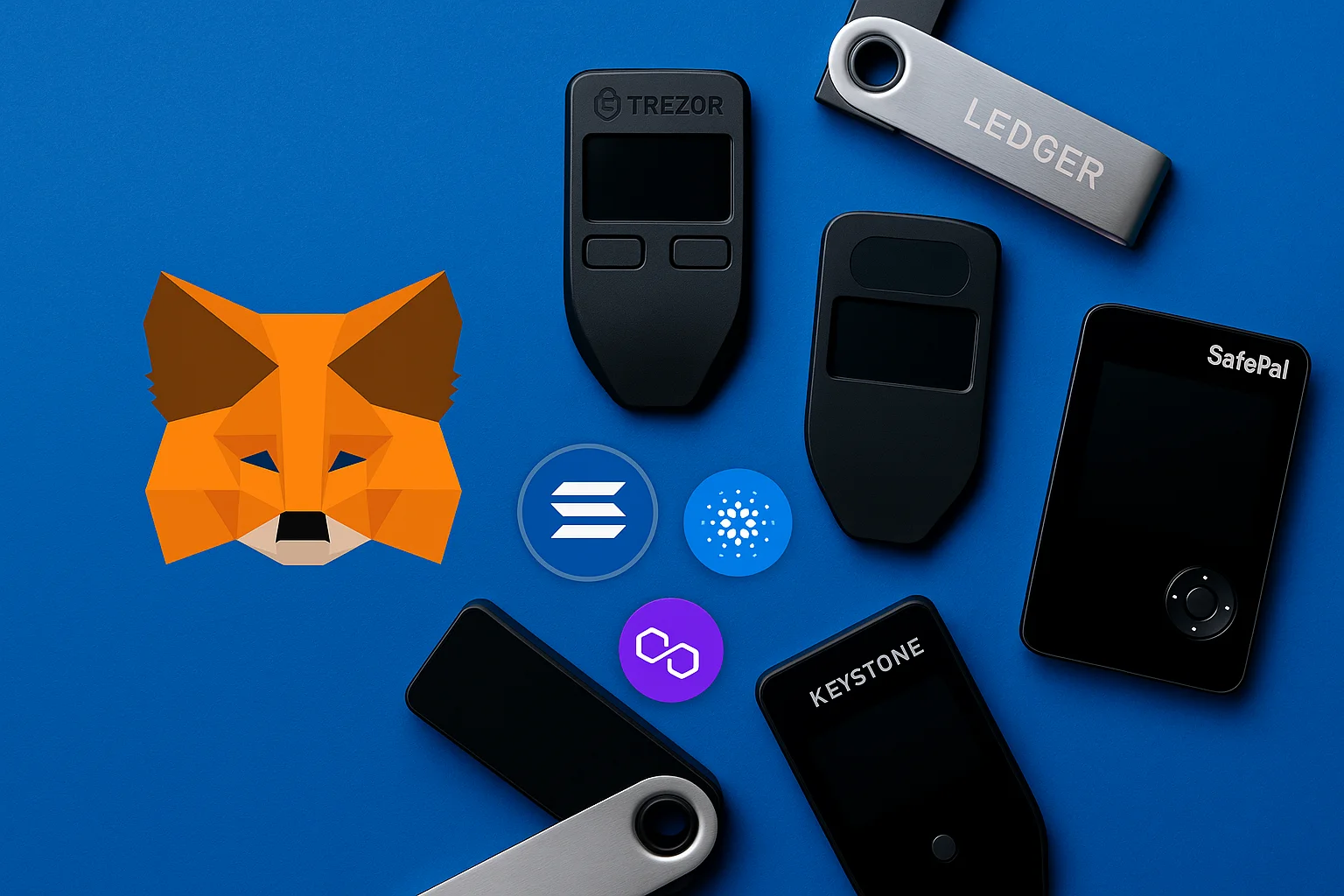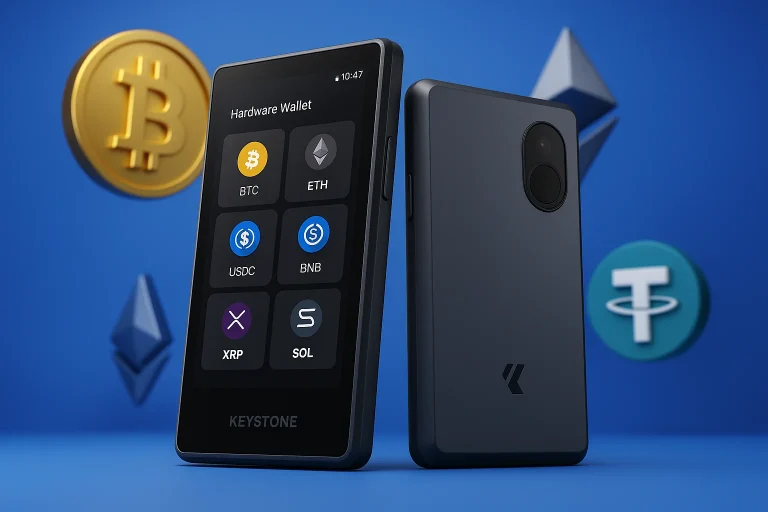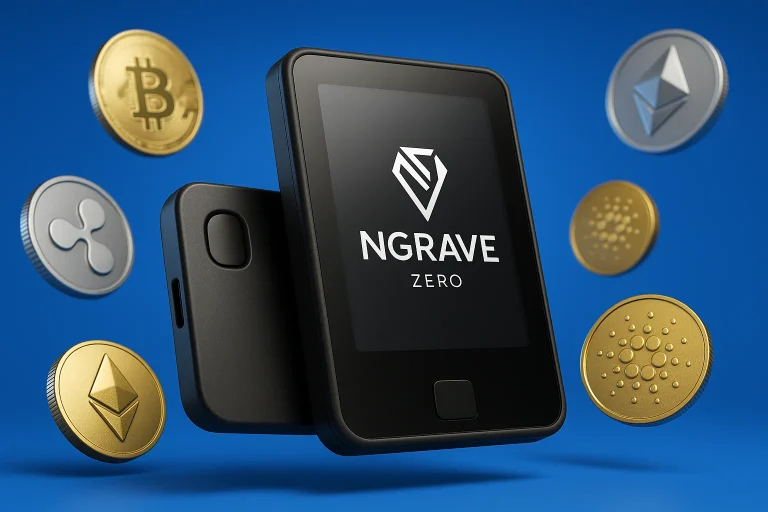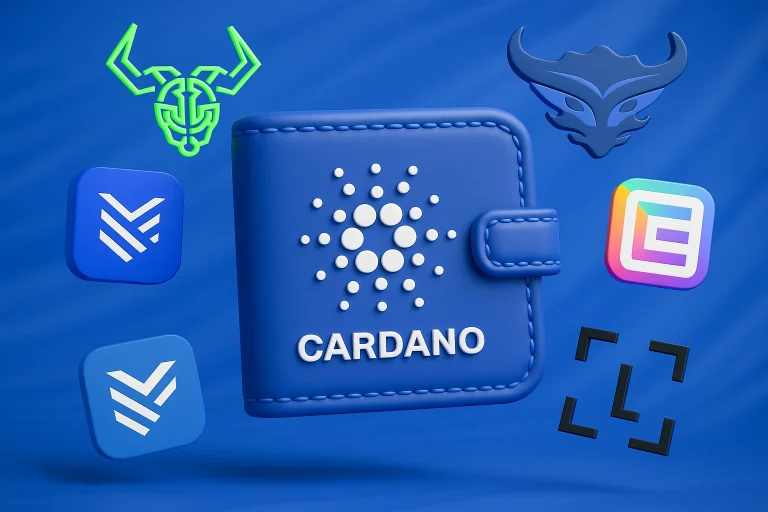Keeping your MetaMask wallet secure is more critical than ever. With phishing scams, hacks, and shady platform plugins, relying on MetaMask alone puts your crypto at serious risk.
According to the Blockchain Security and AML Annual Report, in 2024, attacks caused $494 million in losses, affecting over 332,000 addresses and compromising user balances across the Ethereum ecosystem.
The good news? There’s a practical solution: hardware wallets. These physical devices store your private keys offline, out of reach from hackers and malicious software, giving you more control over your funds.
This guide will discuss the five best hardware wallets for MetaMask users in 2025. Whether you’re a long-term holder or an active DeFi trader managing multiple crypto assets, this is your path to peace of mind.
Table of contents
- 1. Ledger Nano X: Best for Mobile and Bluetooth Connectivity
- 2. Trezor Model T: Best for Advanced Security Features
- 3. Ledger Nano S Plus: Best Budget Option for MetaMask Integration
- 4. Keystone 3 Pro: Best for Air-Gapped Cold Storage
- 5. SafePal S1: Best for On-the-Go MetaMask Users
- How to Choose the Right Hardware Wallet for Metamask
- How To Use a Hardware Wallet With Metamask
- FAQ
- Final Thoughts
Quick Summary: Top 5 Hardware Wallets for MetaMask |
|
|---|---|
| Ledger Nano X | Best for: Mobile & Bluetooth Use Key Feature: Bluetooth + App Integration Price: $149 |
| Trezor Model T | Best for: Advanced Security Key Feature: Shamir Backup + Touchscreen Price: $129 |
| Ledger Nano S Plus | Best for: Budget Option Key Feature: USB-C, Affordable, Trusted Brand Price: $79 |
| Keystone 3 Pro | Best for: Cold Storage Without USB/BT Key Feature: Air-gapped QR Code Connection Price: $149 |
| SafePal S1 | Best for: Travel-Friendly Crypto Security Key Feature: EAL5+ Secure Element + Mobile Sync Price: $49.99 |
Seeking the ideal wallet for TRC20? Check our full guide to the best TRC20 wallets
1. Ledger Nano X: Best for Mobile and Bluetooth Connectivity
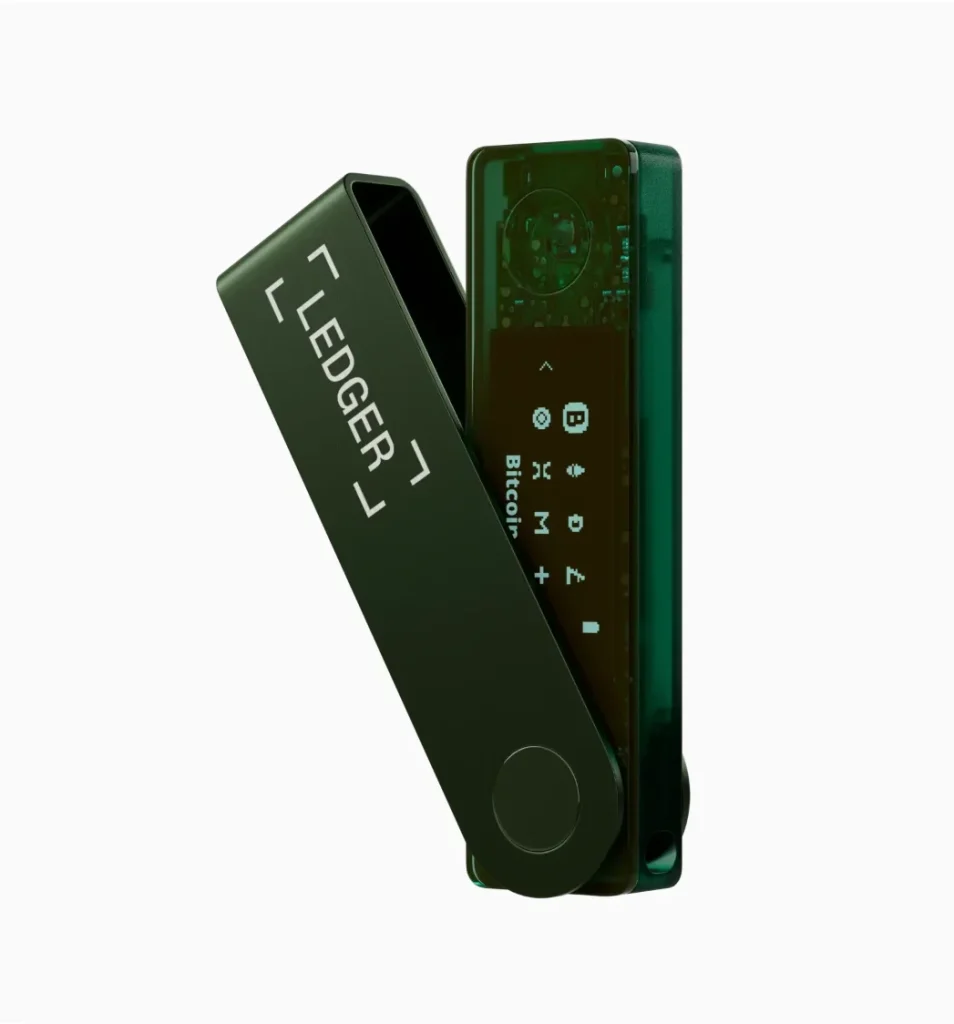
The Ledger Nano X is a top-tier hardware wallet with Bluetooth connectivity, making using MetaMask easier than ever. It offers strong security and the convenience of mobile device access, with a larger screen and longer battery life for a better user experience, all while protecting your secret recovery phrase offline.
Moreover, learn how to set up Ledger Nano X, from unboxing the device to safely sending and receiving crypto
Specifications |
|
|---|---|
| Display | 128×64 OLED screen |
| Connectivity | USB-C + Bluetooth 5.0 |
| Battery Life | 8+ hours of continuous use |
| Supported Assets | 5,500+ cryptocurrencies |
| Memory | 2MB storage (100+ apps) |
| Dimensions | 72 x 18.6 x 11.75 mm |
| Weight | 34 grams |
| Secure Element | ST33J2M0 (CC EAL5+) |
| Mobile App | Ledger Live Mobile |
| Recovery Phrase | 24-word BIP39 seed |
2. Trezor Model T: Best for Advanced Security Features
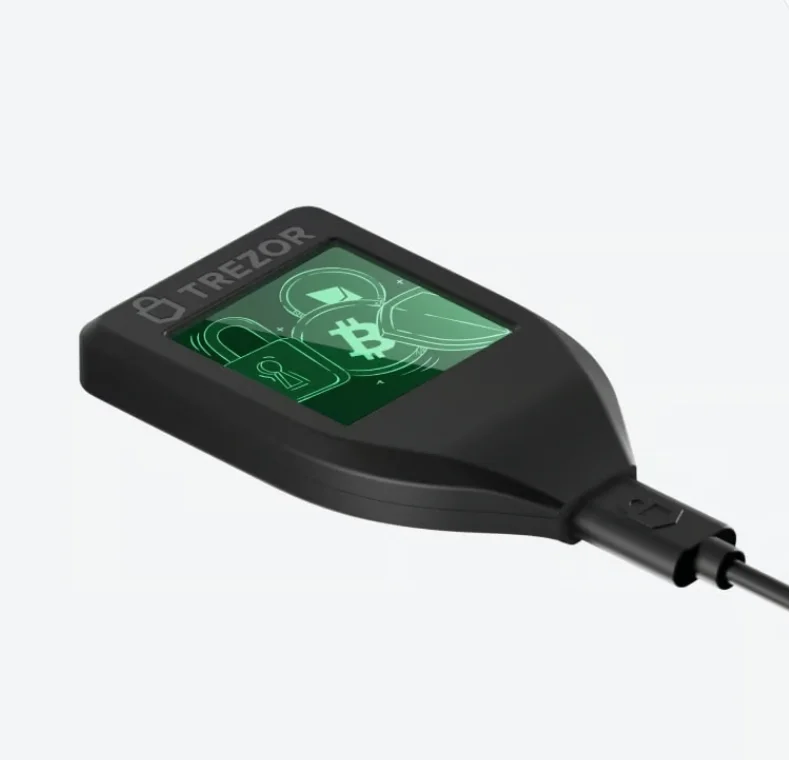
The Trezor Model T is SatoshiLabs’ top-of-the-line hardware wallet. It is designed for serious crypto users who value strong security. It features full-color touch screens and is great for verifying transaction details directly on the screen, whether creating a new one or importing an existing wallet.
Check out this in-depth Trezor Model T review.
Specifications |
|
|---|---|
| Display | 1.54″ color LCD touchscreen |
| Connectivity | USB-C |
| Processing | ARM Cortex-M4 168 MHz |
| Supported Assets | 1,800+ cryptocurrencies |
| Memory | MicroSD card slot |
| Dimensions | 64 x 39 x 10 mm |
| Weight | 22 grams |
| Security | Shamir Backup support |
| Interface | Touch-based navigation |
| Recovery Options | 12/18/20/24-word seeds |
3. Ledger Nano S Plus: Best Budget Option for MetaMask Integration
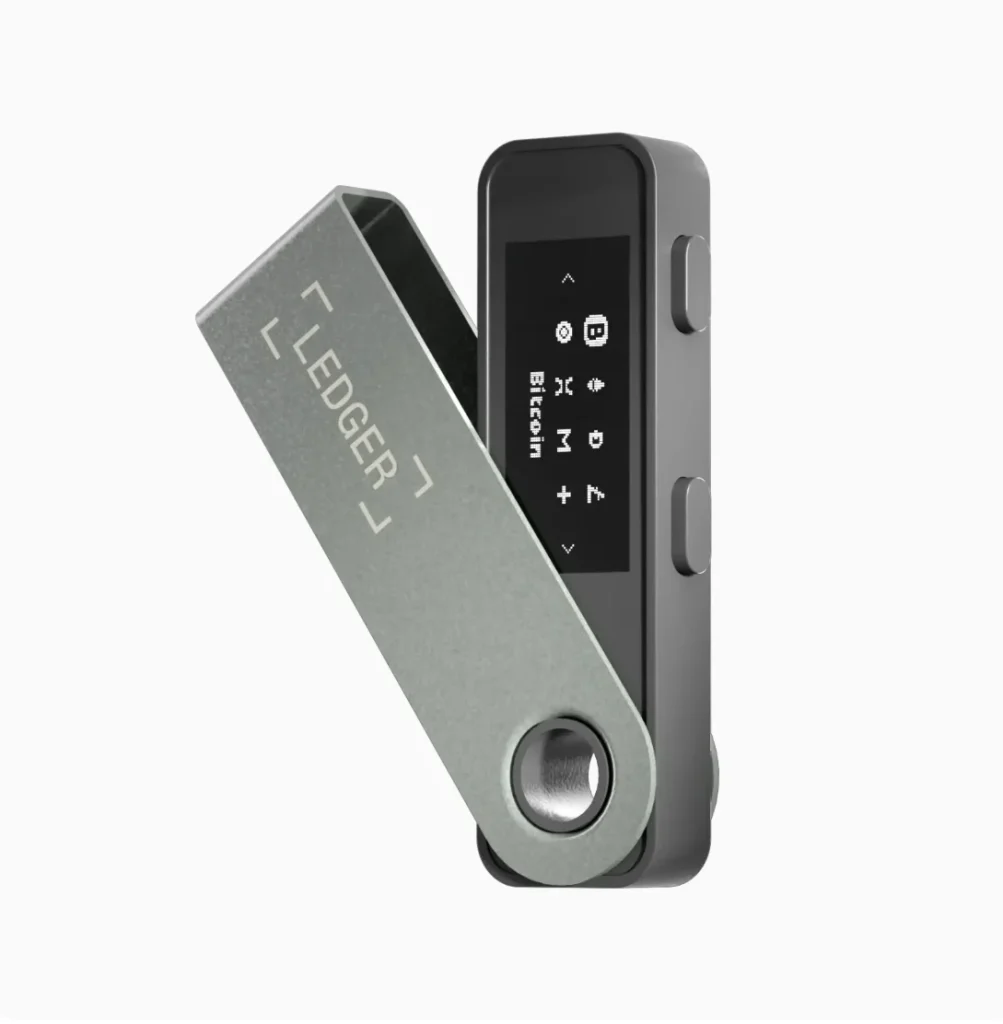
The Ledger Nano S Plus offers high-level security at an affordable price, making it a great choice for MetaMask users new to hardware wallets. It uses the same secure chip as Ledger’s premium models but keeps things simple and budget-friendly.
Specifications |
|
|---|---|
| Display | 128×64 OLED monochrome |
| Connectivity | USB-C |
| Processing | Secure Element ST33K1M5 |
| Supported Assets | 5,500+ cryptocurrencies |
| Memory | 1.5MB storage (70+ apps) |
| Dimensions | 62.39 x 17.40 x 8.24 mm |
| Weight | 21 grams |
| Power | USB-powered (no battery) |
| Security | CC EAL5+ certified chip |
| Setup | Ledger Live desktop/mobile |
4. Keystone 3 Pro: Best for Air-Gapped Cold Storage
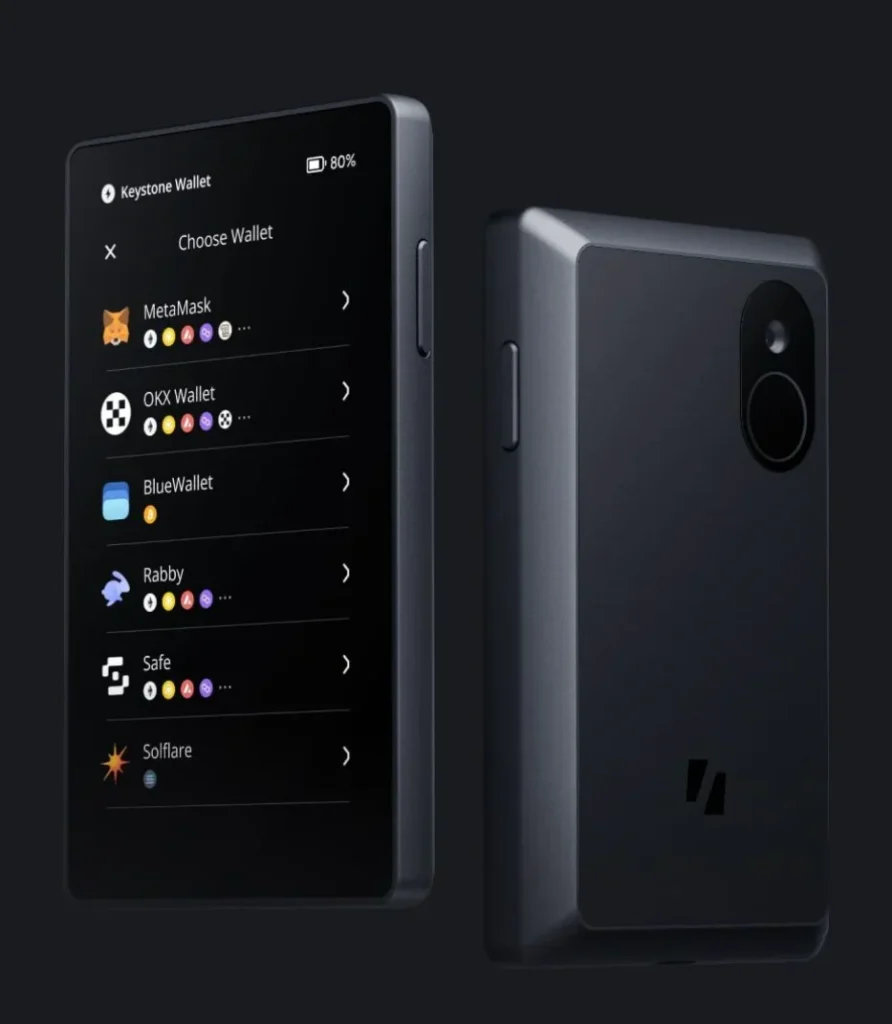
The Keystone 3 Pro avoids USB and Bluetooth for ultra-secure cold storage. It connects with MetaMask through QR code scanning. Perfect for those who value complete air-gaps and open-source systems on the Ethereum blockchain.
Specifications |
|
|---|---|
| Display | 4″ IPS color touchscreen |
| Connectivity | QR codes only (air-gapped) |
| Camera | Built-in for QR scanning |
| Processing | ARM Cortex-A7 quad-core |
| Battery | 1400mAh rechargeable |
| Supported Assets | Bitcoin, Ethereum, 200+ others |
| Dimensions | 107 x 54 x 16 mm |
| Weight | 80 grams |
| Security | Open-source firmware |
| Storage | MicroSD card slot |
5. SafePal S1: Best for On-the-Go MetaMask Users
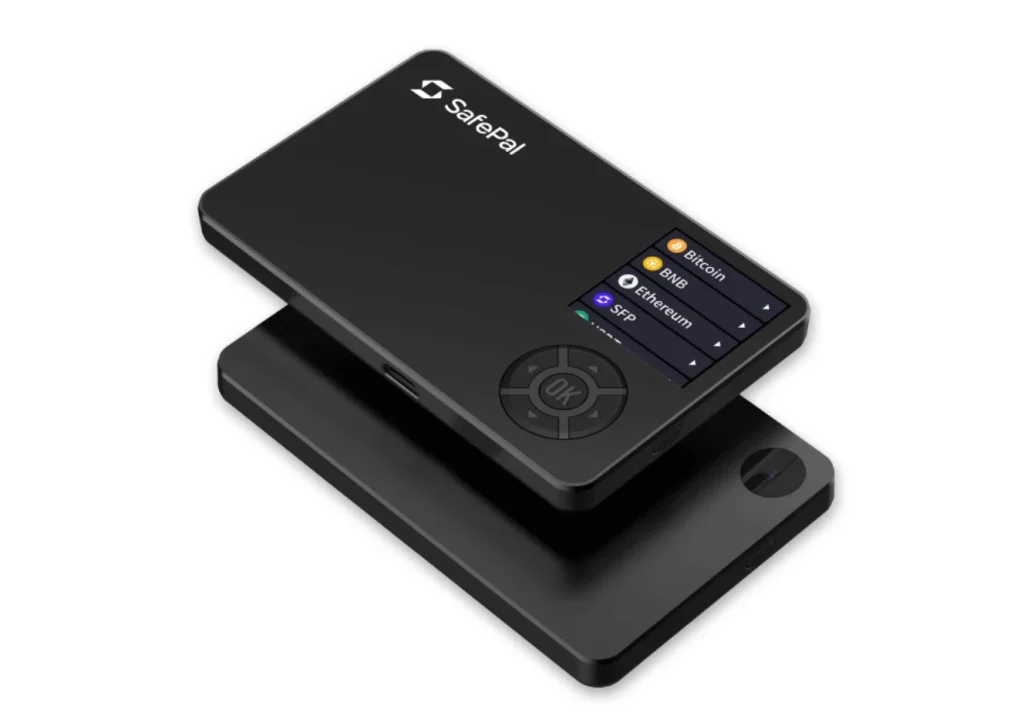
The SafePal S1 is compact, budget-friendly, and perfect for mobile use. It uses QR codes and a dedicated app for safe and convenient transactions, which is helpful if you transfer funds with a lightweight device.
Check out this SafePal S1 review for a more in-depth perspective.
Specifications |
|
|---|---|
| Display | 1.3″ color LCD |
| Connectivity | QR codes + mobile app |
| Battery | 370mAh rechargeable |
| Processing | Secure Element (EAL5+) |
| Supported Assets | 100+ blockchains, 10,000+ tokens |
| Dimensions | 58 x 25 x 9.7 mm |
| Weight | 27 grams |
| Charging | Wireless charging support |
| Mobile App | SafePal App (iOS/Android) |
| Recovery | 12-word mnemonic phrase |
How to Choose the Right Hardware Wallet for Metamask
Choosing the best hardware wallet for MetaMask depends on your needs, experience level, and how you use your crypto. Here are a few key factors to consider:
1. Security Features
If security is your top priority, look for wallets with advanced protection, such as secure elements, passphrase support, Shamir Backup, or air-gapped signing. Devices like the Trezor Model T and Keystone 3 Pro are great choices for users who want maximum offline security.
2. Connectivity Options
Do you prefer to manage your MetaMask wallet on your mobile device or computer? The Ledger Nano X (with Bluetooth) or SafePal S1 (QR-based mobile sync) may be a better fit if you use your smartphone. If you use your desktop mostly, models like the Ledger Nano S Plus offer simplicity with USB-C support.
3. Budget and Value
If you’re just starting or managing smaller amounts of crypto, a lower-cost wallet like the Ledger Nano S Plus or SafePal S1 can provide strong security without breaking the bank.
4. Ease of Use
Look for a wallet with a user-friendly interface and MetaMask integration guides. Some wallets, like the Trezor Model T, have touchscreen navigation, making it easier for beginners to operate.
5. MetaMask Compatibility
Ensure MetaMask officially supports the wallet you choose. All wallets in this guide are compatible and connect smoothly via MetaMask’s interface.
There’s no one-size-fits-all solution. Whether you need advanced features, mobile flexibility, or an affordable starting point, there’s a hardware wallet that matches your MetaMask setup.
How To Use a Hardware Wallet With Metamask
Here’s how to securely connect any supported hardware wallet to MetaMask:
What You’ll Need:
- A MetaMask extension is installed and set up;
- A compatible hardware wallet (Ledger, Trezor, Keystone, SafePal, etc.);
- A USB cable or another connection method (Bluetooth or QR code, depending on device);
- Your hardware wallet is unlocked and ready;
- (Optional) The companion app (like Ledger Live, Trezor Suite, or Keystone Companion).
Step 1: Prepare Your Hardware Wallet
- Turn on your hardware wallet and unlock it with your PIN.
- Open the Ethereum app or ensure your device is in Ethereum-compatible mode.
- Ensure the firmware is updated and any required companion apps are closed if MetaMask needs direct access.
Step 2: Open MetaMask in Your Browser
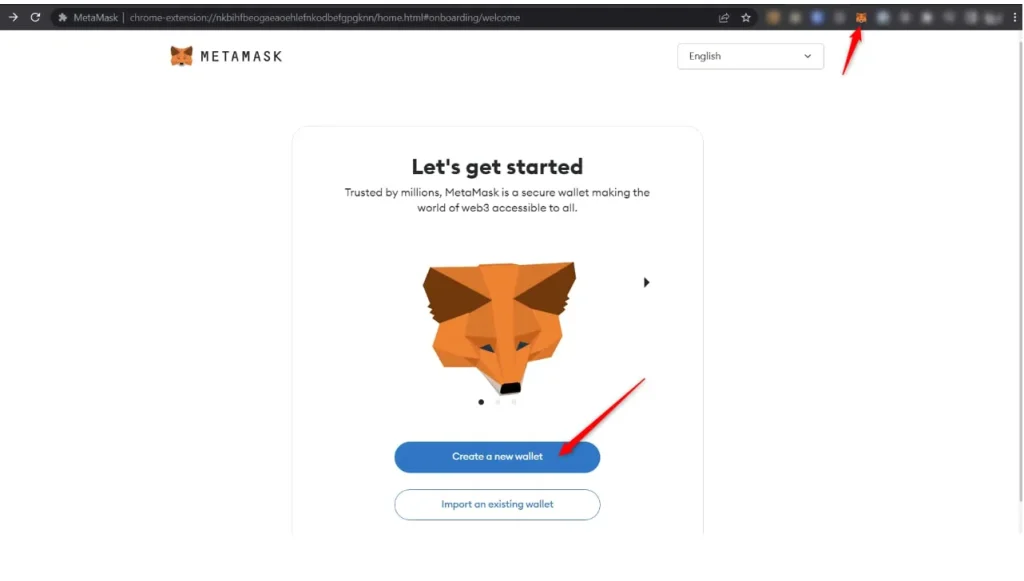
- Click on the MetaMask icon to open the extension.
- Ensure you’re on the Ethereum Mainnet or another supported network.
Step 3: Start the Connection
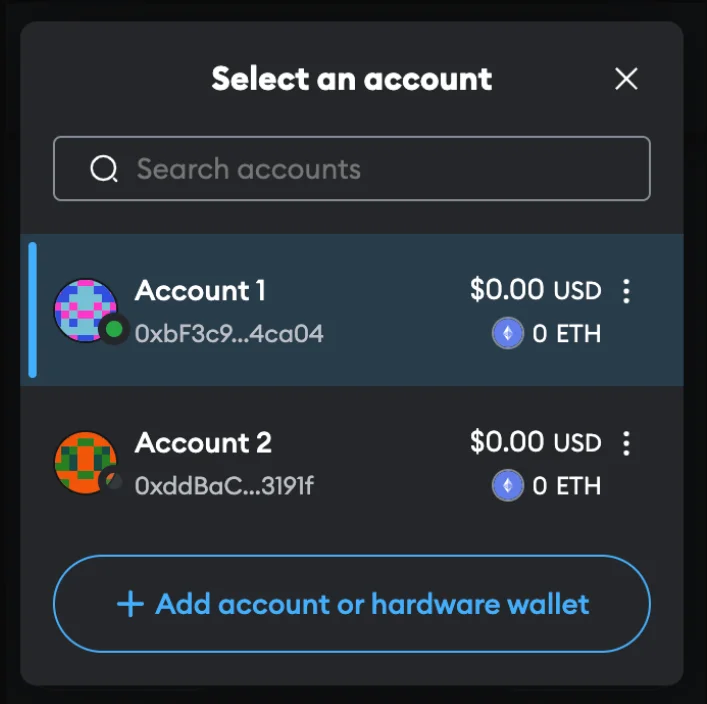
- In MetaMask, click the account icon (top-right corner).
- Click “Add account or hardware wallet”
Step 4: Choose Your Device
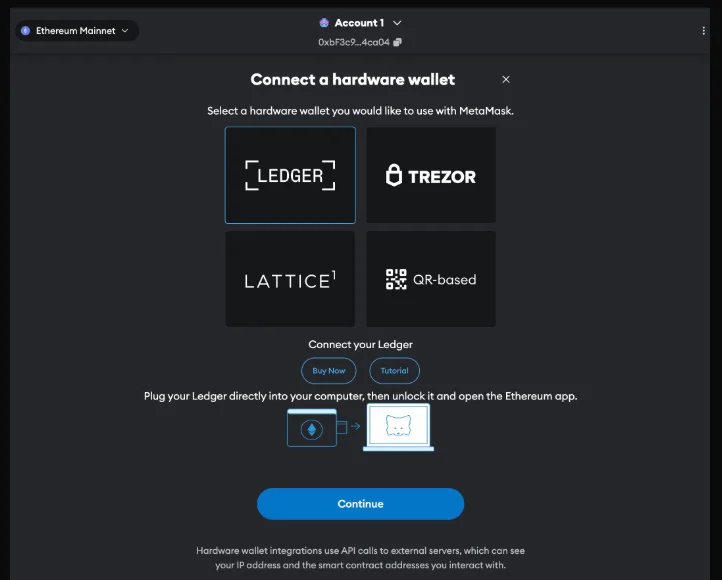
- Select your hardware wallet brand (e.g., Ledger, Trezor).
- MetaMask will prompt you to connect your device.
Step 5: Approve the Connection on Your Device
- Confirm the connection on your hardware wallet’s screen if asked.
- Choose the account/address you want to use.
- Approve or unlock the address.
Step 6: Use Your Hardware Wallet With MetaMask
- Your hardware wallet address will now appear as a new account inside MetaMask.
- It works like a regular MetaMask wallet, but all transactions must be approved from your device.
- You can now safely interact with dApps, NFTs, DeFi, and more, while keeping your keys offline.
Notes and Best Practices
- Always verify the address shown on your hardware device before approving any transaction.
- For wallets like Keystone or SafePal that use QR codes, you may need to scan codes between the device and MetaMask.
If your device doesn’t connect, make sure:
- Browser support is enabled (for USB devices).
- You’re using a supported browser (Chrome or Firefox).
- Extensions like Ledger Live or Trezor Suite are closed if not needed.
FAQ
MetaMask is a hot wallet because it’s always connected to the internet. This makes it easier to use but also exposes it to online threats. Connecting MetaMask to a hardware (cold) wallet to boost your security, especially for long-term or high-value holdings, is smart.
Modern hardware wallets support many cryptocurrencies, including Bitcoin, Ethereum, ERC-20 tokens, Solana, etc. Still, to avoid compatibility issues, always check the wallet’s official supported assets list before sending crypto.
MetaMask is convenient and popular, but it comes with risks. Since it’s online, it’s vulnerable to phishing, browser attacks, and malware. It also doesn’t offer built-in 2FA (two-factor authentication).
Using a hardware wallet with MetaMask lets you sign transactions offline, so your private keys never touch the internet. MetaMask’s smooth interface is combined with the strong offline protection of cold storage, which is ideal for safety and usability.
If you lose your hardware wallet, your crypto is safe if you have your recovery seed phrase. You can restore access by entering the seed into a new compatible hardware wallet or a secure wallet app. Without that phrase, your funds are permanently lost, so storing them offline and securely is critical.
Final Thoughts
Using MetaMask alone can be risky. Connecting a hardware wallet reduces exposure and improves your crypto safety.
When choosing the best hardware wallets for MetaMask, there are excellent options for different needs. Whether it’s market trading, NFT use, or DeFi, these five wallets offer protection for every type of user:
- Ledger Nano X for Bluetooth users.
- Trezor Model T for advanced security.
- Ledger Nano S Plus for budget protection.
- Keystone 3 Pro for offline, air-gapped storage.
- SafePal S1 for travel-friendly QR security.
Staying updated with firmware and safety habits is critical to protecting your digital wealth.

